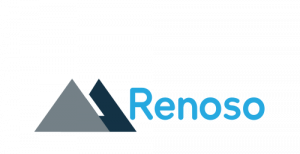Pork, IBM and Blockchain
The basis for bitcoin, cross-border payments or optimised supply chains: blockchain technology can be used in many ways. IBM is one of the pioneers of this technology for secure, direct transactions on the internet. In addition to the technical platform, „Big Blue” is promoting blockchain development in various initiatives, for example, with partners like Walmart for transparency in the pork supply chain.
Food is perishable. This means companies must monitor the supply chain very closely to uncover contamination or diseases caused by food. Let’s take pork, for example. Did the problem start with the farmer, at a manufacturer of ready-meals, during transport by a shipping company – or did the supermarket staff interrupt the refrigeration chain for too long? Especially with global supply chains, this is difficult and time-consuming to find out when information about goods and transactions is often still written on paper or documented in Excel spreadsheets.
Blockchain technology can provide a remedy here. This has been demonstrated in a project IBM undertook in cooperation with Walmart at the end of 2017, tracking pork deliveries in China and mango deliveries in the USA. Information regarding the individual links in the supply chain was available within seconds. Product information such as provenance, batch number, processing data, expiration dates or compliance with refrigeration chain requirements are stored digitally in the blockchain and can be tracked reliably. This also enables the source of contaminated products to be clarified rapidly, enabling companies to recall the appropriate products quickly and reduce the spread of disease.
A blockchain creates transparency and trust, and helps ensure greater food safety. It is a good foundation for large networks with many different partners, enabling them to record all their transactions unchangeably in a common cash book and to access this data in real-time.
The IBM Blockchain Platform as the foundation
The foundation for the solution is the IBM Blockchain Platform. The platform, which has already proven itself in practice, is available via the IBM Cloud and simplifies technical and organisational construction of blockchain networks.
- Developing: The IBM Blockchain Platform offers Hyperledger-based programming tools. Hyperledger is an open source initiative for promoting cross-sector blockchain technologies. Specifically, these are the Hyperledger Fabric v1.0 Framework and the Hyperledger Composer. In addition, IBM offers ready-to-use code blocks for standard applications, documentation, APIs and architecture diagrams. This enables nearly every programmer to quickly become a blockchain developer. Furthermore, training and detailed learning materials are available as part of the IBM Academic Initiative; for students too.
- Controlling: A variety of governance and workflow tools are provided to help organise cooperation and coordination in the network. The participants can use them to process new members quickly, to assign roles, control access rights, create smart contracts and so perform transactions using the blockchain.
- Operating: IBM operates its platform in its own cloud, with permanent updates and a high level of security – including protection against identity abuse within a network and malware, as well as having the highest security category for encryption codes (FIPS140-2 Level 4). Of course, IBM has no access to the encrypted data in the blockchain ecosystem.
Related Services
IBM also offers related blockchain services beyond the platform. This includes technical support (basic and premium) for the Hyperledger Fabric and Hyperledger Composer development tools, plus comprehensive consulting, thanks to around 1,600 IBM Global Business Services experts. They help their customers to develop and implement concepts for new business models. This generally takes place in IBM Cloud Garage Blockchain locations.
This is where IBM brings managers, technical architects and developers together to provide a greater insight into blockchain issues. As well as workshops on concepts, application ideas, interoperability and migration, IBM also offers Design Thinking workshops to create business and technology roadmaps to help provide solutions for their customers. Here, requirements for a Minimum Viable Product (MVP) are defined and an initial MVP developed.
Partners from many sectors
To drive blockchain technology forward, IBM is working with partners from different industries across the globe. In addition to Walmart, IBM is cooperating with other companies from the global food supply chain, including Golden State Foods, Kroger, Nestlé and Unilever. Together the partners are investigating new fields of application for the technology in their supply chains.
An optimized supply chain is also the goal of a joint venture with Maersk, the world’s largest container shipping company. Using blockchain technology, the new company will develop a digital platform for global trade based on open standards, which will make the transport of goods across national borders and trade zones more transparent. Smart contracts should also accelerate the awarding of permits and the exchange of digital documents across national borders. Manufacturers, shipping companies, haulage firms, ports, customs authorities – and the consumer too – will all profit from faster and cheaper processing and transportation of goods.
Other partners include the London Stock Exchange, the Beijing Institute of Technology and banks such as the Bank of Montreal, CaixaBank, Commerzbank and UBS. With the latter, IBM is building Batavia, the new global trading platform based on blockchain technology. The platform serves the financing of commercial activities of all kinds, for example, the carriage of goods by air, land or sea.



